Бухта Королевы-2: ЛЕГИОН МЫШЕЙ ЛЕТУЧИХ и КАК ПИТЬ НА ЛЕТУ + индекс
Вы когда-нибудь видели, как сплошная пелена летучих мышей затягивает небо? Нет? А выглядит это вот так:

Я на некоторое время прерву рассказ и о Флоресе, и о танцах, чтобы выполнить еще одно данное ЗДЕСЬ обещание - показать расположенную в окрестностях Бухты королевы на вид ничем не примечательную пещеру летучих мышей RAWAKALONG GOA LALAY:
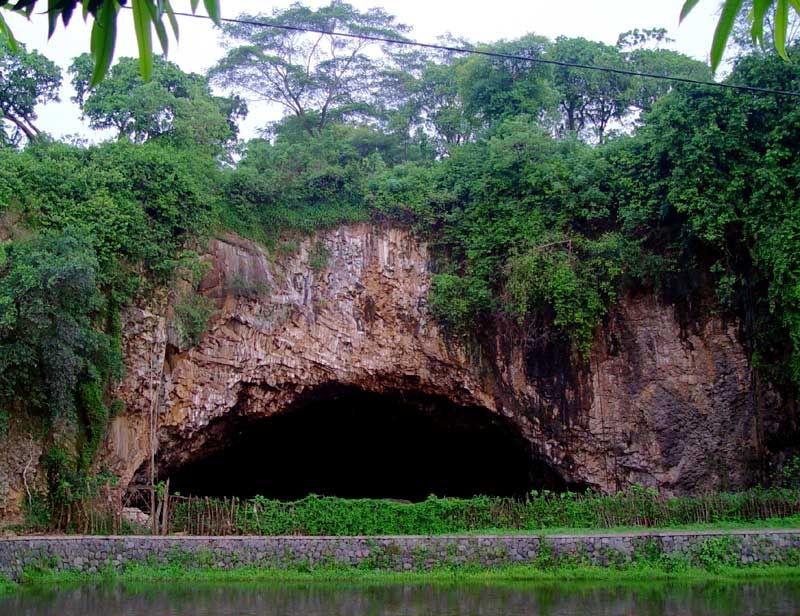
Highlights: Goa Lalay - Bats' Cave at Pelabuhan Ratu (Sunda)
Здесь живут намного меньшие по размеру летучие мышки по сравнению с теми, что я показывал в ЭТОМ ПОСТЕ. Вот такие:
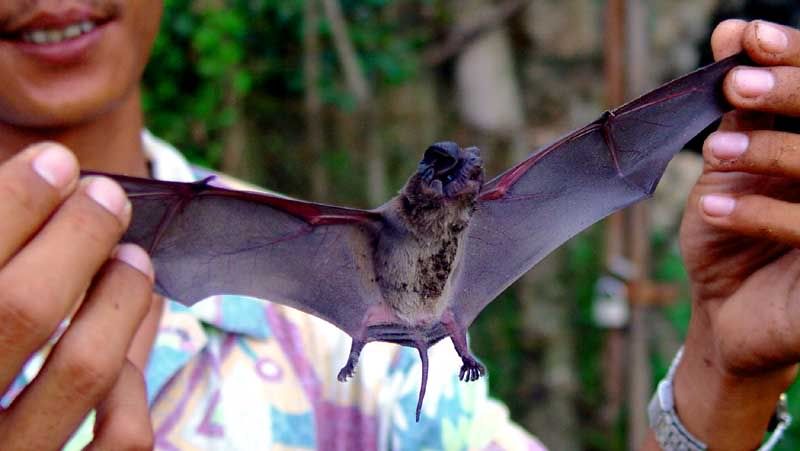
Зато их тут намного больше:

Как ни странно, именно вот такие мелкие мышки - хищники (они едят насекомых).
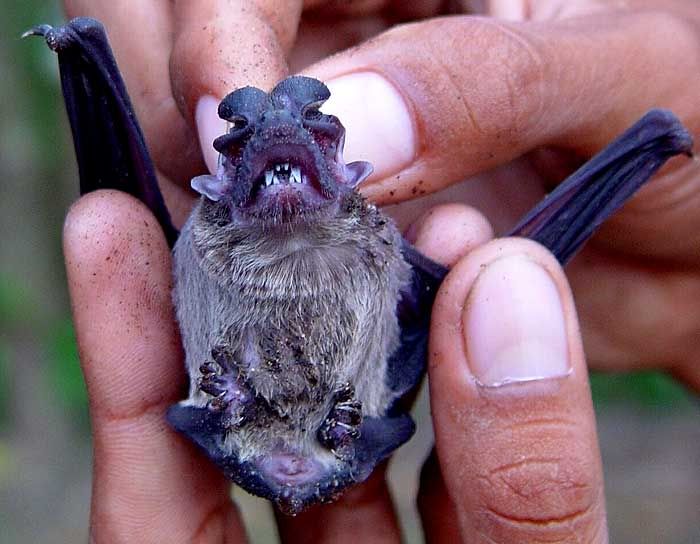
Тогда как вызывающие ассоциации с вампирами гигантские мыши Панджалу - вегетарианки и питаются фруктами :-)

Нет, все-таки фотоаппарат с этим зрелищем справиться не в состоянии - как ни снимай: что под тучами, …
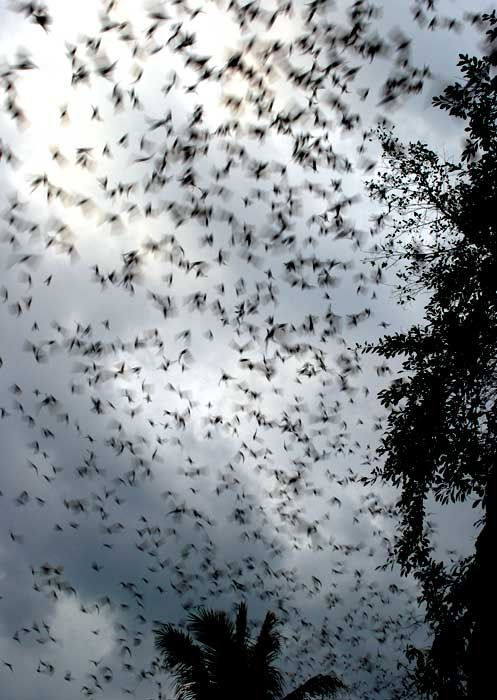
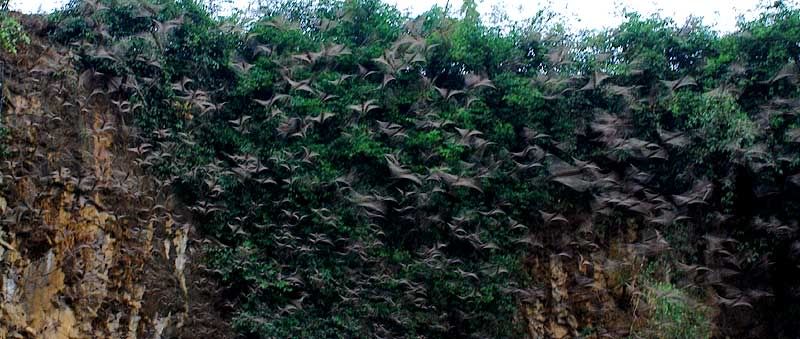
…что под закатным солнцем (вылетают они из пещеры на закате, а возвращаются на рассвете)…

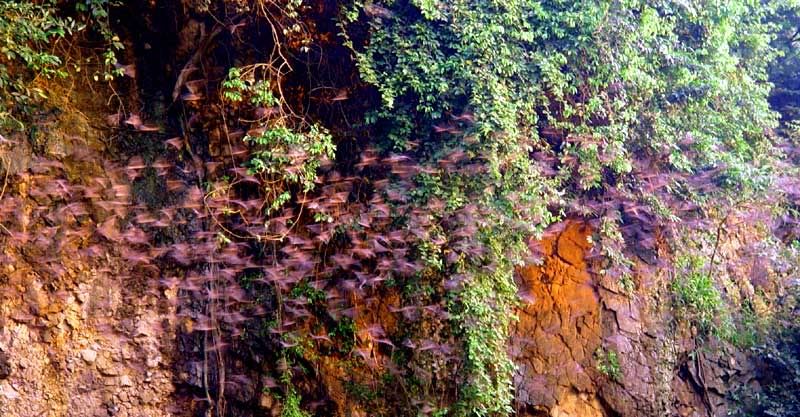
Посмотрите-ка лучше на видео:
А вот этими снимками (несмотря на безобразное качество) я горжусь: попробуйте-ка поймать момент, когда стремительная летучая мышь ночью чиркает по воде, зачерпывая воду (причем учтите, что в темноте ее на подлете не видно (впрочем, ее и днем на подлете не очень-то видно :-)
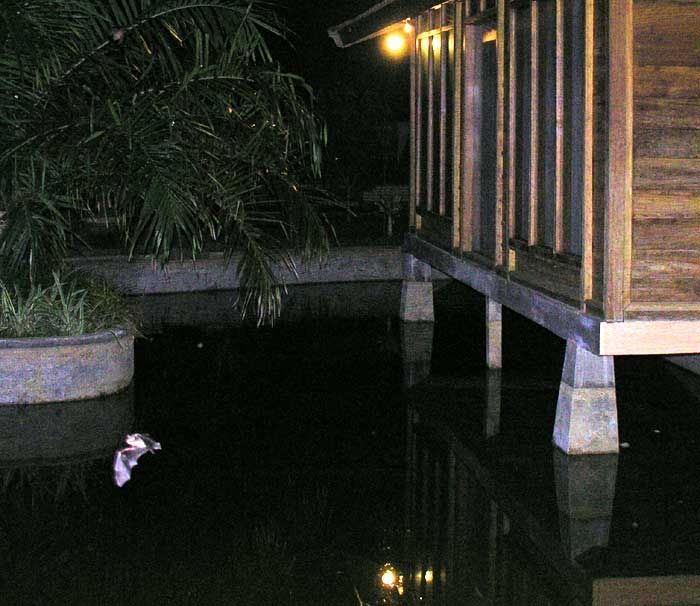
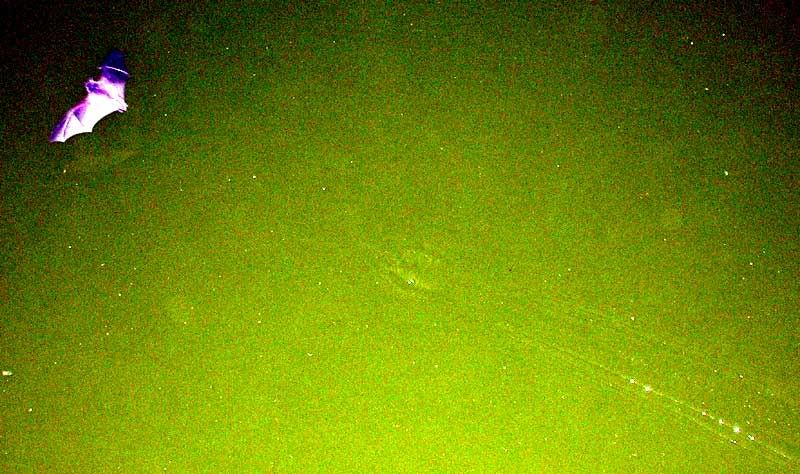
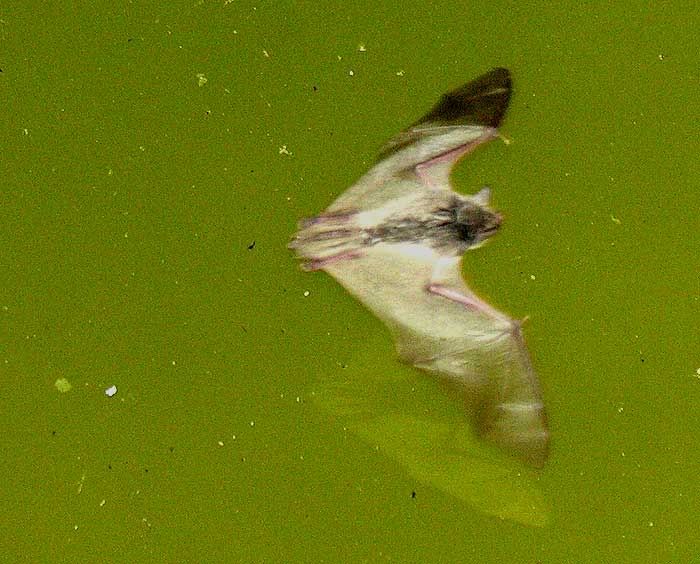
Индекс по летучим мышам:
Панджалу (Зап.Ява) - калонги
о.Мойо (близ о.Сумбава) - еще калонги
И ещё калонги на Комодо
Еще с калонгами общался: travel2asia;
ЛЕТУЧИЕ МЫШИ НА КАЛИМАНТАНЕ "СОТРУДНИЧАЮТ" С РАСТЕНИЯМИ-ХИЩНИКАМИ
JG 6.8.11: Indonesia is home to 225 of the roughly 1,240 species of insectivore and frugivore bats in the world, accounting for about 30 percent of all mammal species found in the country. It is also home to 172 mice species.
UPD: Bogor, West Java, June 6, 2011(ANTARA) - The bat population in Indonesia is threatened as four of the 225 species in the country are now difficult to find, an expert says.
"The four species which have become rare are otomops johstonoi from Flores and Alor, neoptenus trostii from Sulawesi, rouseptus linduenst from Lindu Lake in Sulawesi and otomops forrmosus from Java," bat expert from the Center of Biological Research of the Indonesian Institute of Sciences (LIPI), Ibnu Maryanto, said at a press conference on International Southeast Asian Bat Conference at Royal Hotel here on Monday. Ibnu said the two bat species had been difficult to find since five to 10 years ago.
Ibnu said bats play an important role in the eco-system balance and are useful for human life. He said bats were one of mamals that can fly are a natural predator and pollinator of plants.
Of the 225 bat species in Indonesia, 75 are fruit eaters and pollinators while the remaining 148 are insect eaters that help man fight insects and diseases. "In an hour a bat could eat 6,000 insects. So imagine if bats are gone we can predict a lot of diseases like malaria will happen," he said.
Ibnu said large colonies of bats in limestone caves are vulnerable to threats. "Changes caused by human beings could affect their livelihood," he said. He said exploitation of limestone for industries that had destroyed a lot of caves in almost all karsts in Indonesia has been one of the causes for the extinction of certain bat species.
The chief of LIPI, Lukman Hakim, meanwhile said the impact of the loss of the bat`s role as pollinator has already been felt now. "We used to find "Durian Parung" in Parung, Bogor, in the past but now the fruit is difficult to find there," he said.
Lukman said Indonesia has the world`s largest bat families (11 families) but it has also lost the largest species due to the destruction of their habitats.
The bat conference of South, Southeast and East Asia that will last from June 6 to 9 is the second after the first held in Pucket, Thailand in 2007. A total of 80 researchers from 20 countries namely Indonesia, Malaysia, the Philippines, Brunei Darussalam, Vietnam, Cambodia, Laos, Singapore, India, China, Japan, Taiwan, the US, Canada, Britain, Australia, Pakistan and Vanuatu attended the conference.

Я на некоторое время прерву рассказ и о Флоресе, и о танцах, чтобы выполнить еще одно данное ЗДЕСЬ обещание - показать расположенную в окрестностях Бухты королевы на вид ничем не примечательную пещеру летучих мышей RAWAKALONG GOA LALAY:

Highlights: Goa Lalay - Bats' Cave at Pelabuhan Ratu (Sunda)
Здесь живут намного меньшие по размеру летучие мышки по сравнению с теми, что я показывал в ЭТОМ ПОСТЕ. Вот такие:

Зато их тут намного больше:

Как ни странно, именно вот такие мелкие мышки - хищники (они едят насекомых).

Тогда как вызывающие ассоциации с вампирами гигантские мыши Панджалу - вегетарианки и питаются фруктами :-)

Нет, все-таки фотоаппарат с этим зрелищем справиться не в состоянии - как ни снимай: что под тучами, …


…что под закатным солнцем (вылетают они из пещеры на закате, а возвращаются на рассвете)…


Посмотрите-ка лучше на видео:
А вот этими снимками (несмотря на безобразное качество) я горжусь: попробуйте-ка поймать момент, когда стремительная летучая мышь ночью чиркает по воде, зачерпывая воду (причем учтите, что в темноте ее на подлете не видно (впрочем, ее и днем на подлете не очень-то видно :-)



Индекс по летучим мышам:
Панджалу (Зап.Ява) - калонги
о.Мойо (близ о.Сумбава) - еще калонги
И ещё калонги на Комодо
Еще с калонгами общался: travel2asia;
ЛЕТУЧИЕ МЫШИ НА КАЛИМАНТАНЕ "СОТРУДНИЧАЮТ" С РАСТЕНИЯМИ-ХИЩНИКАМИ
JG 6.8.11: Indonesia is home to 225 of the roughly 1,240 species of insectivore and frugivore bats in the world, accounting for about 30 percent of all mammal species found in the country. It is also home to 172 mice species.
UPD: Bogor, West Java, June 6, 2011(ANTARA) - The bat population in Indonesia is threatened as four of the 225 species in the country are now difficult to find, an expert says.
"The four species which have become rare are otomops johstonoi from Flores and Alor, neoptenus trostii from Sulawesi, rouseptus linduenst from Lindu Lake in Sulawesi and otomops forrmosus from Java," bat expert from the Center of Biological Research of the Indonesian Institute of Sciences (LIPI), Ibnu Maryanto, said at a press conference on International Southeast Asian Bat Conference at Royal Hotel here on Monday. Ibnu said the two bat species had been difficult to find since five to 10 years ago.
Ibnu said bats play an important role in the eco-system balance and are useful for human life. He said bats were one of mamals that can fly are a natural predator and pollinator of plants.
Of the 225 bat species in Indonesia, 75 are fruit eaters and pollinators while the remaining 148 are insect eaters that help man fight insects and diseases. "In an hour a bat could eat 6,000 insects. So imagine if bats are gone we can predict a lot of diseases like malaria will happen," he said.
Ibnu said large colonies of bats in limestone caves are vulnerable to threats. "Changes caused by human beings could affect their livelihood," he said. He said exploitation of limestone for industries that had destroyed a lot of caves in almost all karsts in Indonesia has been one of the causes for the extinction of certain bat species.
The chief of LIPI, Lukman Hakim, meanwhile said the impact of the loss of the bat`s role as pollinator has already been felt now. "We used to find "Durian Parung" in Parung, Bogor, in the past but now the fruit is difficult to find there," he said.
Lukman said Indonesia has the world`s largest bat families (11 families) but it has also lost the largest species due to the destruction of their habitats.
The bat conference of South, Southeast and East Asia that will last from June 6 to 9 is the second after the first held in Pucket, Thailand in 2007. A total of 80 researchers from 20 countries namely Indonesia, Malaysia, the Philippines, Brunei Darussalam, Vietnam, Cambodia, Laos, Singapore, India, China, Japan, Taiwan, the US, Canada, Britain, Australia, Pakistan and Vanuatu attended the conference.